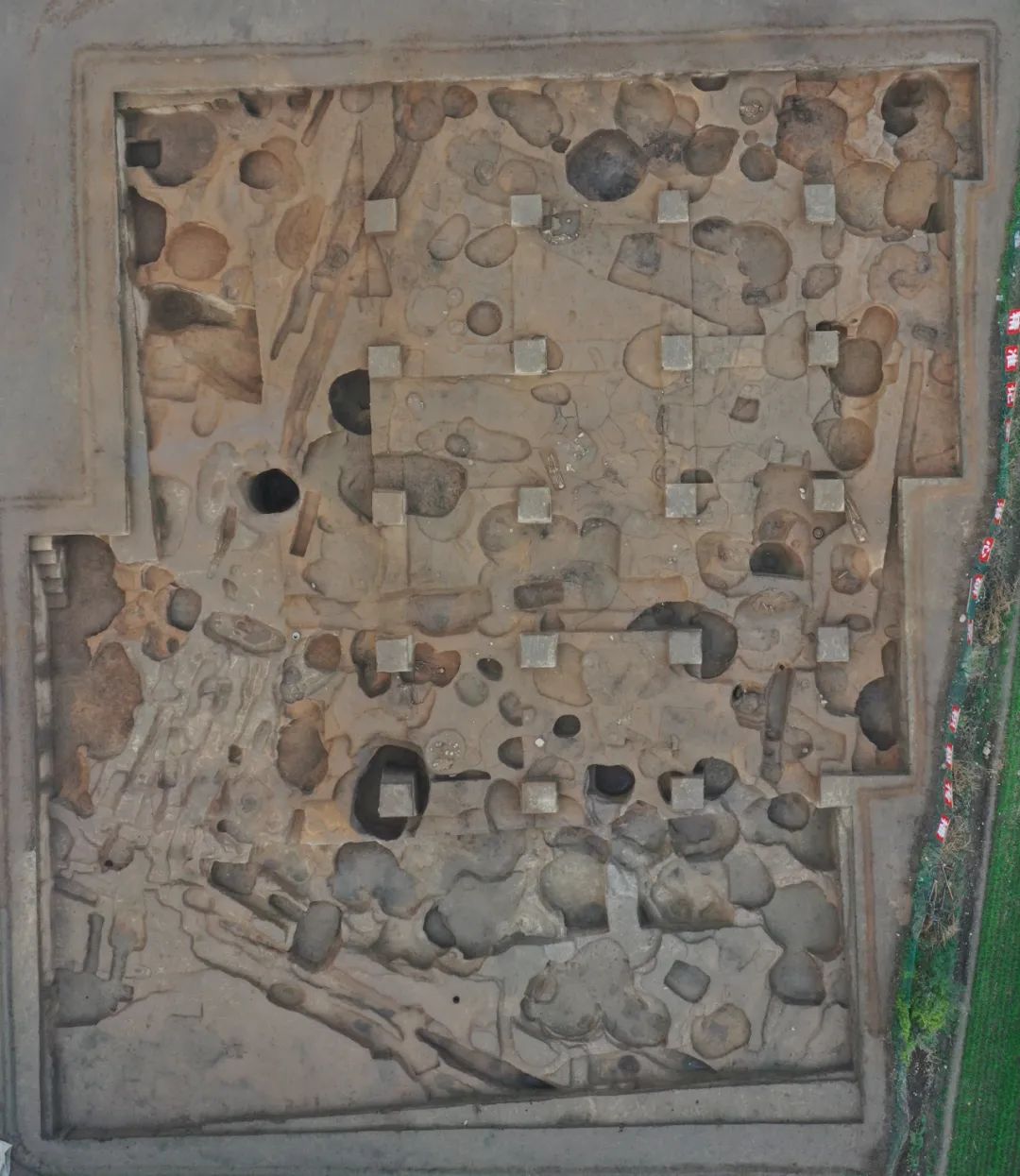
Hundreds of square meters of rammed-earth buildings are enclosed by the surrounding ditch, and the grand sacrificial relics "墠" are among them. Human sacrifices, sacrifices, ritual utensils, etc. are placed on the stage in different categories... At the "2022 Summer" held on June 25 At the "Cultural Forum", Fang Yanming, a researcher at the Henan Provincial Institute of Cultural Relics and Archaeology, introduced the latest archaeological research results of the Wadian site in Yuzhou, Henan, revealing the whole picture of the large-scale sacrificial relics, and reappearing the sacrificial scene in the early Xia Dynasty. 
It is understood that the foundation of the large-scale rammed earth building revealed this time is located on the platform in the northwest of the Wadian site, with a length of about 31 meters from north to south and a width of about 26 meters from east to west. Around the building, several surrounding ditches were found.
On the foundation of the rammed earth building, archaeologists have also found rich remains. Experts speculate that these are related to the activities on large-scale buildings, including: braised clay surfaces and pits related to sacrifice, and related to burial There are five grain pits, important relic pits, human sacrifices (human bone pits) and sacrifices (animal pits) related to sacrificial activities, loess mounds related to the placement of sacrifices, and pillar holes related to sacrificial pavilions.
Archaeologists also found a number of snail accumulations. After analysis, these snails are likely to be collected in autumn, and they may be the remnants of one or more feasts. These feasting behaviors are likely to be related to sacrificial activities. Fang Yanming said, based on this analysis, the sacrificial activities of the Wadian people in the early Xia Dynasty were generally held in autumn, and there were also sacrifices in spring. Some people who participate in the sacrificial activities can participate in the feast.
The Wadian site was discovered in 1979. It is a capital site of the early Xia Dynasty in Henan Province. It has been included in major archaeological projects such as the "Xia, Shang and Zhou Dynasties Project", "Chinese Civilization Origin Project" and "Archaeological China Xia Culture Research". .

This is the panorama of the large-scale sacrificial ruins at the Wadian site.
"The use of the large-scale sacrificial buildings at the Wadian site was around 2000 BC, which was a critical period for the formation and development of the early state. The discovery shows that in the early Xia Dynasty, Wadian City was probably the political, cultural and economic center of the surrounding Songshan area. One of them." Fang Yanming said.It is understood that the foundation of the large-scale rammed earth building revealed this time is located on the platform in the northwest of the Wadian site, with a length of about 31 meters from north to south and a width of about 26 meters from east to west. Around the building, several surrounding ditches were found.
On the foundation of the rammed earth building, archaeologists have also found rich remains. Experts speculate that these are related to the activities on large-scale buildings, including: braised clay surfaces and pits related to sacrifice, and related to burial There are five grain pits, important relic pits, human sacrifices (human bone pits) and sacrifices (animal pits) related to sacrificial activities, loess mounds related to the placement of sacrifices, and pillar holes related to sacrificial pavilions.

This is a sacrifice in the large-scale sacrificial remains of the Wadian site.
"Looking at the latest archaeological materials and existing research in academia, we believe that the large-scale buildings revealed this time are the 'deep-earth yong' that was formed after the surface of the sacrificial buildings was leveled. Ancestors, gods, etc." Fang Yanming said.Archaeologists also found a number of snail accumulations. After analysis, these snails are likely to be collected in autumn, and they may be the remnants of one or more feasts. These feasting behaviors are likely to be related to sacrificial activities. Fang Yanming said, based on this analysis, the sacrificial activities of the Wadian people in the early Xia Dynasty were generally held in autumn, and there were also sacrifices in spring. Some people who participate in the sacrificial activities can participate in the feast.

This is the mussel left over from the banquet in the large-scale sacrificial remains of the Wadian site.
"The reconstruction of the sacrificial scene at the Wadian site is a concrete manifestation of the 'national event, in sacrificial and Rong' at that time, and is of great value for the study of sacrificial activities during the Longshan Culture period." Fang Yanming said.The Wadian site was discovered in 1979. It is a capital site of the early Xia Dynasty in Henan Province. It has been included in major archaeological projects such as the "Xia, Shang and Zhou Dynasties Project", "Chinese Civilization Origin Project" and "Archaeological China Xia Culture Research". .
Related Posts